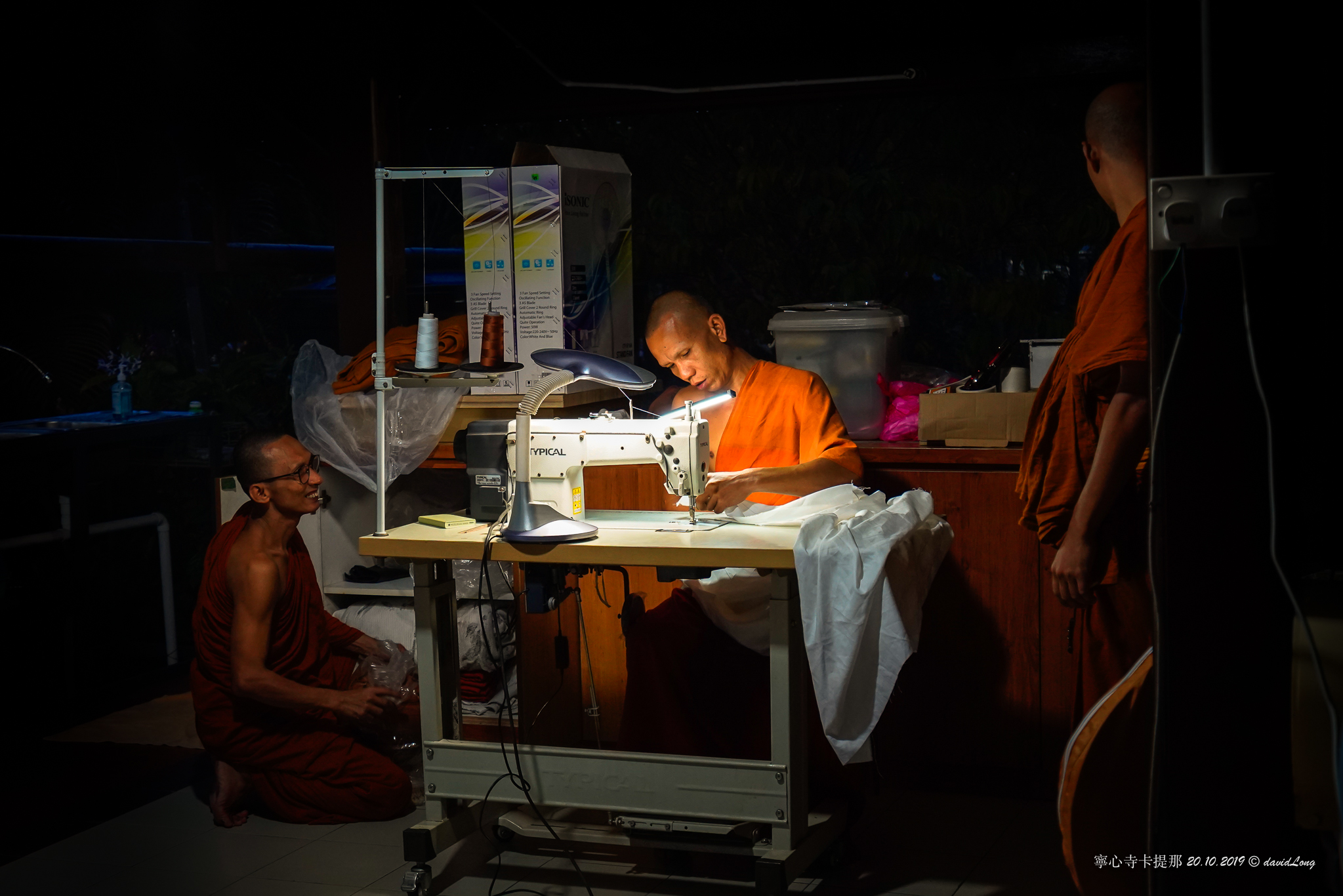The Origin of Cut-sew Robe
The Blessed One, having stayed in Rājagaha for as long as he found suitable, set out on tour for Dakkhiṇāgiri. The Blessed One saw the fields of Magadha laid out in strips, laid out in lines, laid out in embankments, laid out in squares, and seeing this, he addressed the venerable Ānanda, saying, “Ānanda, do you see those fields of Magadha laid out in strips, laid out in lines, laid out in embankments, laid out in squares?”
“Yes, Bhante.”
“Are you able, Ānanda, to provide robes like this for the bhikkhus?”
“I am able, Bhante.”
Then the Blessed One, having stayed at Dakkhiṇāgiri for as long as he found suitable, went back again to Rājagaha. Then the venerable Ānanda, having provided robes for several bhikkhus, approached the Blessed One and said, “Bhante, let the Blessed One see the robes provided by me.”
Then the Blessed One, on that occasion, having given a discourse, addressed the bhikkhus, saying, “Bhikkhus, Ānanda is clever. Ānanda is very intelligent, as he can understand in detail the meaning of that which was spoken by me in brief and can make a cross-seam, a short cross-seam, a circular seam, a short circular seam. He can make a central piece along with borders and sections for the upper and lower parts of the body. He knows that what is cut up should be roughly sewn together, as is suitable for recluses and not coveted by others.” – Mahā Vagga VIII.12.2
The Buddha ordered to design such a robe for 3 reasons:
- Expensive clothes are rejected if they are being cut into pieces and thus it will lose its value.
- The beauty of the cloth is unattractive if fabrics scraps are sewn together.
- The cloth makes marks after plenty of dyeing. The cloth appears to be unwanted, undesirable and even the thief will not be interested in stealing.
The robe has been sewn like this from the time of the Buddha to the present.
Originally the monks used cow dung (Khomai) or red clay to dye the robe. However, the color of the robe is inappropriately dark. Eventually disagreement occurred and at the request of the king, the Buddha said that,
“Monks, we allow 6 types of dyeing liquids for robe dyeing, which included tree, tree’s root, bark, leaf, flower and fruit juice.”
After dyeing, the robe will turn out to be a dull yellow, or a deep red-dotted yellow like dyed with jackfruit essence. But the monk are forbidden to dye their robes with turmeric, fang, kale, Mahad, lotus bark, dark bark, ebony leaf, indigo, daffodil, etc.
The “paddy field” pattern of the robes is also kāyāgatāsati, or recollection of the true nature of the body. Our body is built up from rice and other types of food. Our life is sustained through gifts which came about through the hard work of people on farms who harvested the things we eat. The robes are a helpful tool for “wearing” this reflection and keeping it close. They remind us of what the body is and where it comes from.
百纳袈裟的延生
有一天,佛陀和徒弟们到达 Dakkhiṇāgiri 郊外,看见 Bihar农田,然后佛陀向 Ananda说“Anan, 你可以设计和缝纫一件有如农田形状的袈裟。”
Ananda尊者回答佛陀说:“可以。”
Ananda 尊者就尊随佛陀的意愿设计和缝纫出像稻田形状的袈裟。佛陀称赞Ananda尊者是一位有机智和能清楚与准确明白指示的人。
佛陀吩咐设计缝纫百纳袈裟有三个目的 :
1)把昂贵的布剪成很多块就会变成没有价值和没人要。
2)把很多碎布块缝纫起来会有很多衣缝和不美观。
3) 多次重复染色的袈裟会变成没价值,小偷和强盗都不要偷和不要抢的衣。
袈裟从佛陀时代就是这样缝纫到现今。
原本袈裟是用牛粪和红泥染色的。染出来是暗色,不妥当。经过国王的请求,佛陀说 :”僧伽,我们可用6种染料,例如树根,树,树皮,叶子,花朵和果汁。当染色后,袈裟会变成黄, 若赤, 深黄如菠萝蜜。但是,僧伽们不能用薑黄, 甘蓝类蔬菜, 莲花皮, 黑檀, 靛蓝植物和水仙花等等。”
袈裟的“稻田”图案也是kāyāgatāsati,或对身体真实本性的随念。我们的身体是由大米和其他类型的食物组成的。我们的生活是通过收割我们吃的东西的农场里的人们的辛勤工作而获得的成果来维持的。袈裟是穿着及遮盖的工具。它们提醒我们身体是什么以及它来自哪里。


Comments are closed